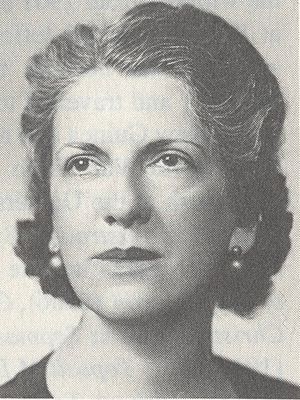Margaret Duley facts for kids
Quick facts for kids
Margaret Duley
|
|
|---|---|
 |
|
| Born | September 27, 1894 St. John's, Newfoundland |
| Died | March 22, 1968 St. John's, Newfoundland |
| Occupation | Author |
| Nationality | Newfoundlander, Canadian |
Margaret Iris Duley (born September 27, 1894 – died March 22, 1968) was a famous writer from Newfoundland. Many people believe she was the first novelist from Newfoundland to become well-known around the world. She was born before Newfoundland joined Canada. Her books often showed a strong connection to the land and the sea. She wrote about women from small coastal towns who felt different or wanted more from life. Her stories also showed her belief in women's rights.
Contents
Margaret Duley's Early Life and School
Margaret Duley was born in St. John's, Newfoundland. Her father, Thomas Duley, came from England. Her mother, Tryphena Soper, was from Carbonear, Newfoundland. Margaret's father owned a successful store in St. John's. It sold glasses, jewelry, and fancy items.
In 1910, Margaret finished school at the Methodist College in St. John's. A year later, in 1911, she went to England with her family. She decided to study acting and public speaking there. She attended the London Academy of Music and Dramatic Art. However, she had to return home because of World War I.
Later Life and Helping Others
Margaret Duley had three brothers. Two of them fought in World War I. Margaret herself helped the Women's Patriotic Association. This group raised money and supplies for soldiers. Her oldest brother, Cyril, was badly hurt in the war. Her younger brother, Lionel, died just before the war ended. Later, Margaret wrote a short story called "Mother Boggan". It was one of the few stories by a Newfoundland writer that talked about the war's sad effects.
In 1920, Margaret's father passed away. He left her enough money to live at home comfortably. She joined groups like the Ladies Reading Room and the Current Events Club. These clubs were places where people discussed new ideas. Many leaders of the women's right to vote movement came from these groups. Margaret supported the Newfoundland Women's Franchise League. This group worked hard to get women the right to vote. In March 1925, women in Newfoundland gained the right to vote at age 25. Men could vote at 21.
Margaret also helped during World War II. She worked for the Women's Patriotic Association again. She also helped the St. John's Ambulance Corporation. After the war, she became a public relations officer for the Red Cross. She started writing articles for newspapers. She also did many interviews and radio talks on station CJON. In 1952, Margaret went to England. She broadcast four stories about the coronation of Queen Elizabeth II.
Health Challenges and Legacy
In 1955, Margaret Duley's health began to get worse. She developed Parkinson's disease. By 1959, the disease made it hard for her to even write letters. She then lived with her sister-in-law and niece. They took care of her until she died in 1968. She was 73 years old.
Today, there is a special plaque in Margaret Duley's memory. It is near the entrance of the Queen Elizabeth II Library. This library is on the campus of Memorial University in St. John's. Her old home at 51 Rennies Mill Road is also part of a special walking tour. This tour highlights places important to women's history in St. John's. In September 2007, Parks Canada named Margaret Duley a National Historic Person. This means she is recognized as a very important person in Canada's history.
Margaret Duley's Written Works
In 1928, Margaret Duley took a boat trip to Labrador with her brother Cyril. On this trip, she saw a seagull with eyes like "yellow ice." This image inspired her first book, The Eyes of the Gull. She said the seagull was a "symbol of a piteous heart of the north." The story is about a 30-year-old woman. She wants freedom from her life in a small coastal town and from her demanding mother.
Her second book was Cold Pastoral. People say this book was inspired by a real story. It was about a child who got lost in the woods. The book tells the story of an orphaned girl. She is adopted by a rich family in St. John's. Margaret's descriptions of life in small towns and the poverty of the 1930s were very real. People in the United States and Britain liked her books. However, some people in her hometown were not impressed.
Her next book, Highway to Valour (1941), is set during a terrible tidal wave. This wave hit the Burin Peninsula in 1929. The story follows a young girl named Mageila. It shows her life after the wave and how she moves to St. John's. Novelty on Earth (1942) is set in a British colony. It secretly describes the lives of the fancy people in St. John's.
Margaret Duley also volunteered at the Caribou Hut. This was a place for soldiers during World War II. Soldiers came to St. John's port during the war. Her experiences there inspired her last big work, The Caribou Hut (1949). This book tells the history of the hostel. It shows the busy and exciting times in St. John's during the war. It also describes how the hostel entertained, fed, and housed about 16,000 soldiers by 1946. She also wrote a short story called Sea Dust. This story is about a ship's cat rescued from the beaches of Dunkirk.

